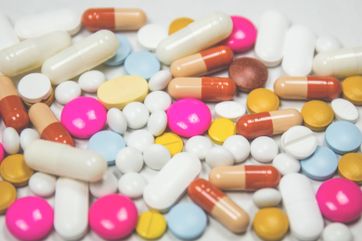Editor's note: This post is by @ronkenett, Anat Reiner-Benaim and @david_s of the KPA Group. It is part of a series of blog posts called The QbD Column. For more information on the authors, click the authors' community names above.
 Ron Kenett
Ron Kenett David Steinberg
David Steinberg Anat Reiner-Benaim
Anat Reiner-Benaim
Developing new drugs is a complex, lengthy and expensive endeavor. When the process leads to an approved drug, the result is improved patient care and great benefits for the developers. But many promising drugs never live up to expectations. The US Food and Drug Administration (FDA), observing that new drug approvals were decreasing and development costs were steeply increasing, reviewed the drug development process. In an unusual industry-government partnership, the FDA, with support from major pharmaceutical companies, launched a Quality by Design (QbD) initiative to help streamline the drug development and approval process. Since statistically designed experiments and general multivariate methods play a central role in QbD, it is a fertile arena for statistical applications.
This blog post, the first in a series dedicated to issues related to Quality by Design, gives a broad overview of QbD. Subsequent blog posts will go into detail on some of the statistical issues in QbD and specifically how JMP can help to solve them.
What is QbD?[1]
 Quality by Design (QbD) in the pharmaceutical industry is a systematic approach to the development of drug products and drug manufacturing processes. It begins with predefined objectives, emphasizes product and process understanding, and sets up process control based on sound science and quality risk management. Here is how an FDA report from 2007 summarizes QbD: “The focus of this concept [QbD] is that quality should be built into a product with a thorough understanding of the product and process by which it is developed and manufactured, along with a knowledge of the risks involved in manufacturing the product and how best to mitigate those risks.” Pharma companies that follow this strategy can earmark their requests to the FDA for approval as “QbD Applications.”
Quality by Design (QbD) in the pharmaceutical industry is a systematic approach to the development of drug products and drug manufacturing processes. It begins with predefined objectives, emphasizes product and process understanding, and sets up process control based on sound science and quality risk management. Here is how an FDA report from 2007 summarizes QbD: “The focus of this concept [QbD] is that quality should be built into a product with a thorough understanding of the product and process by which it is developed and manufactured, along with a knowledge of the risks involved in manufacturing the product and how best to mitigate those risks.” Pharma companies that follow this strategy can earmark their requests to the FDA for approval as “QbD Applications.”
How does QbD improve quality?
Quality control in drug manufacture is crucial. When we use a drug, we rely on the pill or capsule having the correct amount of active material. We rely on the fact that the active material will remain potent for any drug that has not reached its expiration date. QbD highlights these goals as part of the development process – drug manufacture should be engineered in a way that leads to processes that guarantee high quality. Ideally, QbD should lead to process understanding that even allows some deviations from target conditions in manufacture, because the company has demonstrated to the FDA that they will not compromise quality.
Let’s compare the QbD approach to achieving quality to the traditional development scheme. Prior to QbD, product quality and performance were achieved predominantly by restricting flexibility in the manufacturing process and by end product testing. Pharma companies were approved to manufacture only under tightly controlled conditions. End-of-the-line inspection was used to monitor and guarantee quality. The FDA required companies to validate their processes – and in practice this meant showing good consistency across three production batches. Often, this was too small a sample to adequately represent routine manufacturing and was unlikely to cover all potential sources of variability (e.g., raw materials, operators, shifts, reactor vessels).
Under the QbD paradigm, pharmaceutical quality is assured by understanding and controlling manufacturing and formulation variables, rather than inspection and screening out non-conforming product. End product testing is used to confirm the quality of the product and is not part of the ongoing consistency assurance and/or process control.
Design space in QbD
One of the special concepts in QbD is the design space. The design space encompasses the full range of production conditions that yield acceptable quality attributes. The contrast to standard FDA approvals is striking. The standard approval process authorizes use of a standard operating condition, with no flexibility to deviate. The QbD design space leads to authorization of a domain of approved operating conditions. All conditions that yield measurements with lower and upper control limits that are well inside the performance specification limits will be part of the design space.
Most products have several critical quality attributes. The design space is then the intersection of the design spaces for each distinct attribute.
Role of experiments in QbD
QbD emphasizes decision making that is based on strong process knowledge. The use of statistical design of experiments (DOE) is one of the primary tools for generating that knowledge. Under QbD, statistically designed experiments are used for efficiently and effectively investigating process and product factors.
DOE is a key element in deriving the design space. Well-planned experiments provide the information needed to assess how the quality attributes depend on the input factors. The resulting models can be used to identify which operating conditions can be confidently relied upon to meet all the quality requirements.
QbD and drug development
A well-designed control strategy that results from appropriately implementing QbD principles leads to reliable product quality and patient safety profiles. Developing a QbD drug application consists of the following steps:
- Determine the quality target product profile.
- Define the critical quality attributes (CQA).
- Conduct a risk assessment to identify potential critical process parameters.
- Conduct statistically designed experiments (DOE) to identify actual critical process parameters
- Determine an appropriate control strategy.
- Revise the risk assessment.
Coming attractions
In subsequent blog posts, we will present specific examples that illustrate QbD in action. We will also discuss the design and analysis of QbD experiments, including how to find a design space.
References
US Food and Drug Administration. (2007), Pharmaceutical Quality for the 21st Century A Risk-Based Approach Progress Report, available at http://www.fda.gov/AboutFDA/CentersOffices/OfficeofMedicalProductsandTobacco/CDER/ucm128080.htm
[1] Adapted from Chapter 12 “Quality by Design,” Modern Industrial Statistics with Applications in R, MINITAB and JMP, Kenett and Zacks, Wiley, 2014.
You must be a registered user to add a comment. If you've already registered, sign in. Otherwise, register and sign in.